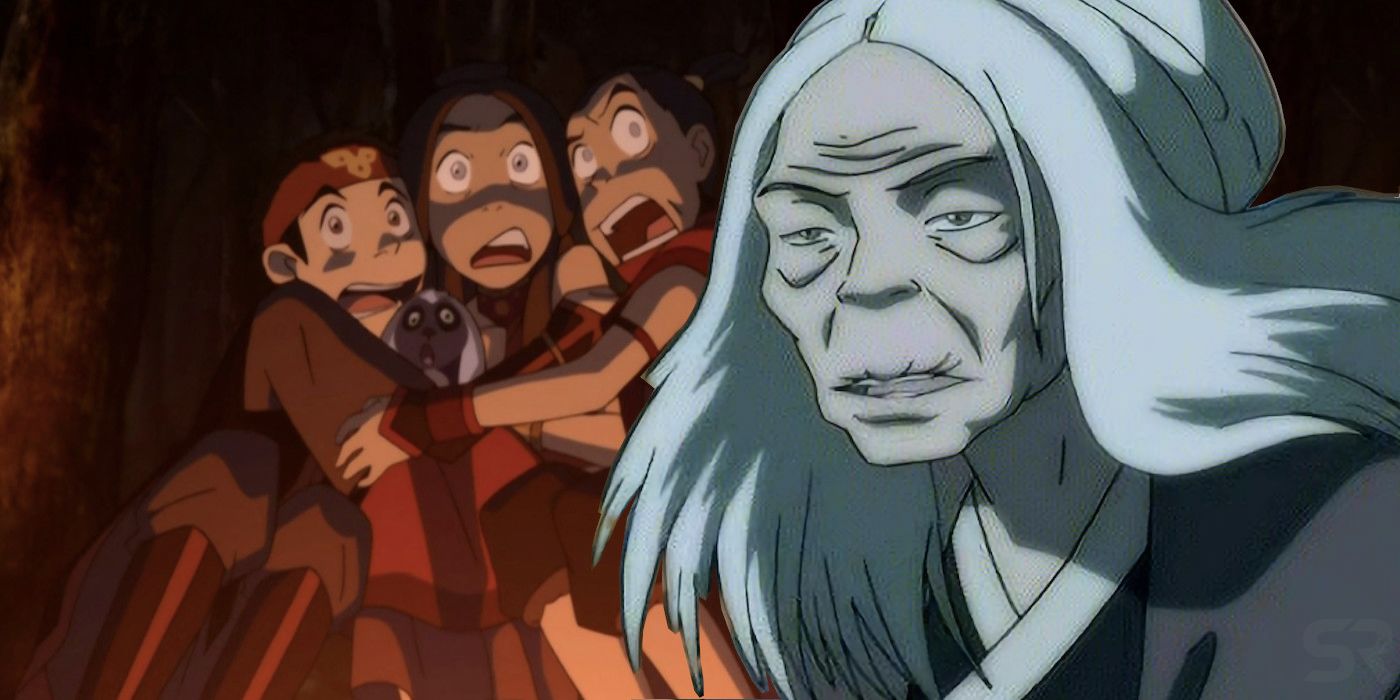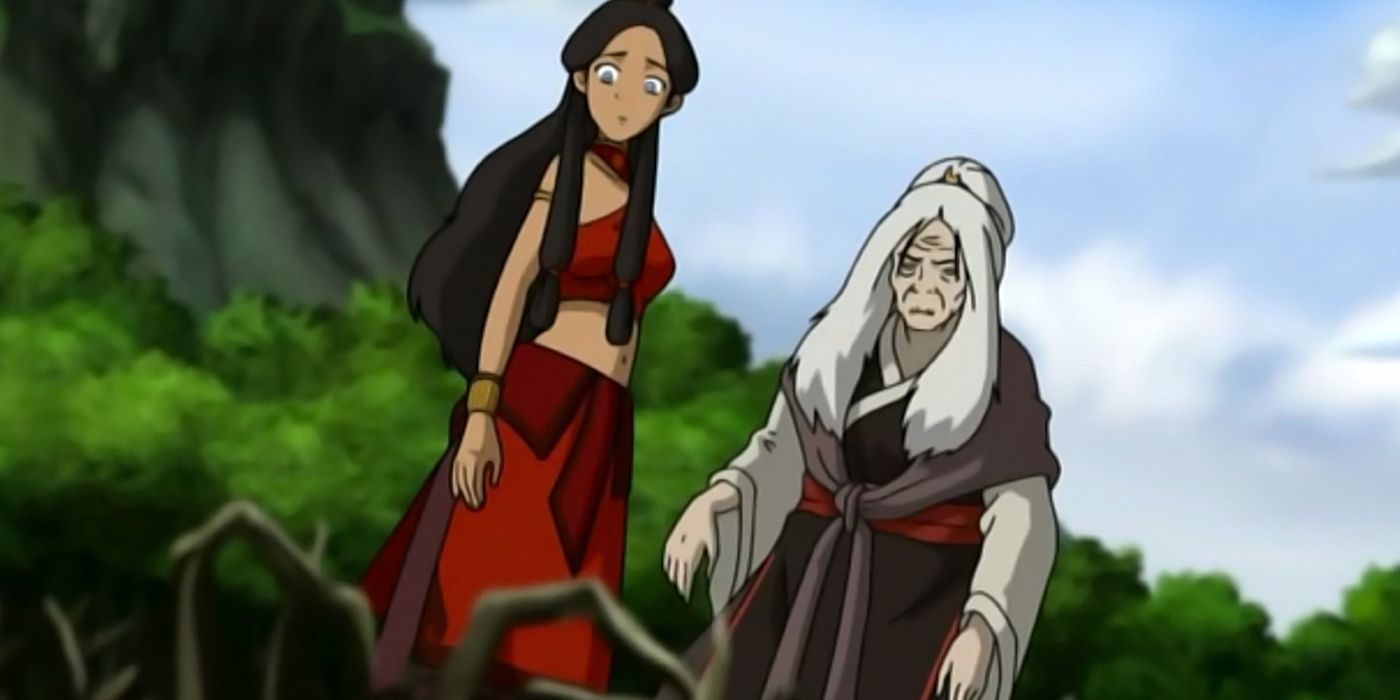While Halloween may not exist in the world of Avatar: The Last Airbender, the series still managed to create the perfect Halloween episode. Released in early November of 2007, season 3, episode 8, "The Puppetmaster" is Avatar's version of a Halloween special. It is widely believed to be the darkest episode in the entire series, and with good reason.
In "The Puppetmaster," Team Avatar finds themselves in a Fire Nation village whose inhabitants have been mysteriously vanishing every month during the full moon. Aang and his companions are taken in by Hama, the village's innkeeper. It turns out that Hama harbors secrets of her own: she is a waterbender from the Southern Water Tribe. She vows to teach Katara what she knows while Aang, Sokka, and Toph investigate the disappearances. They soon discover that the secretive innkeeper is behind the disappearances: Hama uses her powerful bloodbending technique to imprison Fire Nation villagers as revenge for her time spent in a Fire Nation prison.
What makes "The Puppetmaster" such a brilliant Halloween episode is that it contains both frightening moments and meaningful world building. It isn't just a Halloween special for Halloween's sake. Instead, it uses horror tropes to create a genuinely scary story with long-lasting relevancy in Avatar's canon.
"The Puppetmaster" takes a lot of its cues from classic horror, which makes it the perfect episode for Halloween. The episode opens with a ghost story, immediately setting the tone, and it only gets creepier from there. With the villagers' disappearances, puppets lurking in Hama's cupboards, and even some well-timed jump scares, Avatar's creative team amplifies the episode's tension bit by bit. Of course, the scariest element of this entire episode is Hama and her bloodbending. From the moment Hama wanders out of the dark woods, it's clear there's something off about her: she fits perfectly into the horror trope of a creepy old woman with a mysterious past. Everything falls into place when she introduces Katara to bloodbending, which is the perfect Avatar twist on bodily possession. The jerky movements combined with the loss of bodily autonomy make for one of the most chilling moments ever in a children's television show.
Elevating 'The Puppetmaster" even further is the fact that it has major consequences in the Avatar universe. Bloodbending reappears in season 3, episode 16, "The Southern Raiders," when Katara uses it in her hunt to find the Fire Nation soldier who killed her mother. It's a reminder that this terrifying power exists, as well as proof of the extent to which Katara is willing to go to to avenge her mother. Bloodbending is also central to the first season of The Legend of Korra, as it features three new villainous bloodbenders. The re-introduction of bloodbending in The Legend of Korra completely changed the course of the first season, expanding on a fascinating aspect of the original series while also taking this frightening ability to new heights.
Even though it's a Halloween special, "The Puppetmaster" is not isolated from the rest of Avatar: The Last Airbender. The episode perfectly balances serving up scares and staying true to the spirit of the series, plus it lays the groundwork for future stories set in this world. Thanks to its command of tone and its twisting of horror tropes to fit into the Avatar universe, "The Puppetmaster" stands out not just as a perfect Halloween episode, but as one of the best episodes of Avatar: The Last Airbender.


